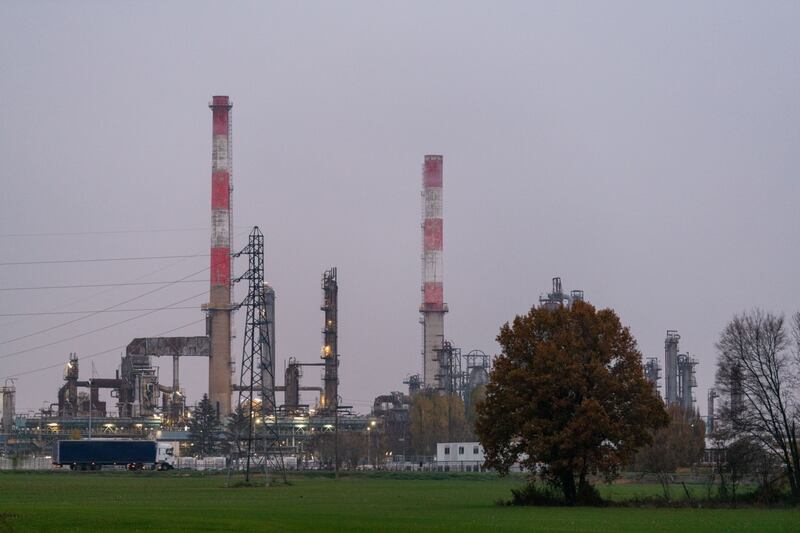The G7 and EU on Friday agreed to put a price cap on imports of Russian oil at $60 a barrel after the last holdout, Poland, gave its consent on Friday.
The price, which is higher than the level at which Russia already sells most of its crude, comes as diplomats seek a measure that keeps Russian oil flowing to global markets.
Poland for the past two weeks pushed for a lower figure, closer to production costs of crude oil at about $30 a barrel, to make it difficult for Russia to fund its war in Ukraine.
Pressure from Poland and the Baltic countries produced additional conditions aimed at punishing Moscow, including a mechanism that would allow for revisions of the price every two months.
The European Commission in consultation with the Group of Seven countries ― Canada, France, Germany, Italy, Japan, the UK and the US ― had initially suggested $65 to $70 a barrel.
It lowered the figure after Polish resistance in addition to suggesting an adjustment mechanism to keep the cap at 5 per cent below the market price.
The EU member states' agreement means the $60 a barrel cap can go into effect on Monday, along with an embargo on Russian seaborne crude.
"The G7 and Australia... reached consensus on a maximum price of 60 US dollars per barrel for seaborne Russian origin crude oil in line with" the European Union, the G7 said in a statement.
The G7 said it was delivering on its vow "to prevent Russia from profiting from its war of aggression against Ukraine, to support stability in global energy markets and to minimise negative economic spillovers of Russia's war of aggression".
The chair of the Russian lower house's foreign affairs committee, Leonid Slutsky, told Tass news agency the EU was jeopardising its own energy security with the cap.
Deputy US Treasury Secretary Wally Adeyemo on Thursday signalled that $60 would be acceptable to Washington, saying it was “in the range” G7 countries have discussed.
The Wall Street Journal reported that US officials have said that individual price estimates are misleading because of the opacity of the market and that they believe that Russian crude is currently trading above $60 a barrel.
The international benchmark for crude oil, or Brent, traded at just under $87 a barrel on Thursday, while Russian Urals crude traded at about $65 a barrel.
The cap, suggested by the G7, softens the EU’s ban on Russian crude by allowing non-western buyers to continue buying Russian oil using western insurance. This avoids potential oil shortages around the globe.
Energy experts such as Phuc-Vinh Nguyen of the Delors Institute think tank estimate that Russia has earned €67 billion ($71 billion) selling oil to EU clients since its invasion of Ukraine in February.
This alone is greater than Russia's €60 billion defence budget before the war and dwarfs the financial and military aid spent by EU states to support Kyiv's pro-western government.
Moscow has previously said that it will not export oil to countries respecting a price cap.
There are fears that the cap could create a shortage of ships willing to carry Russian crude. Bloomberg reported on Friday that owners who are willing to load the crude are attempting to charge more for the risk.
The lack of clarity surrounding exemptions is paving the way for a shift to the so-called dark fleet, or tankers held by undisclosed owners who are willing to continue handling Russian oil despite the threat of sanctions. These ships are mostly older vessels, many of which have a track record of dealing with sanctioned regimes such as Iran.







